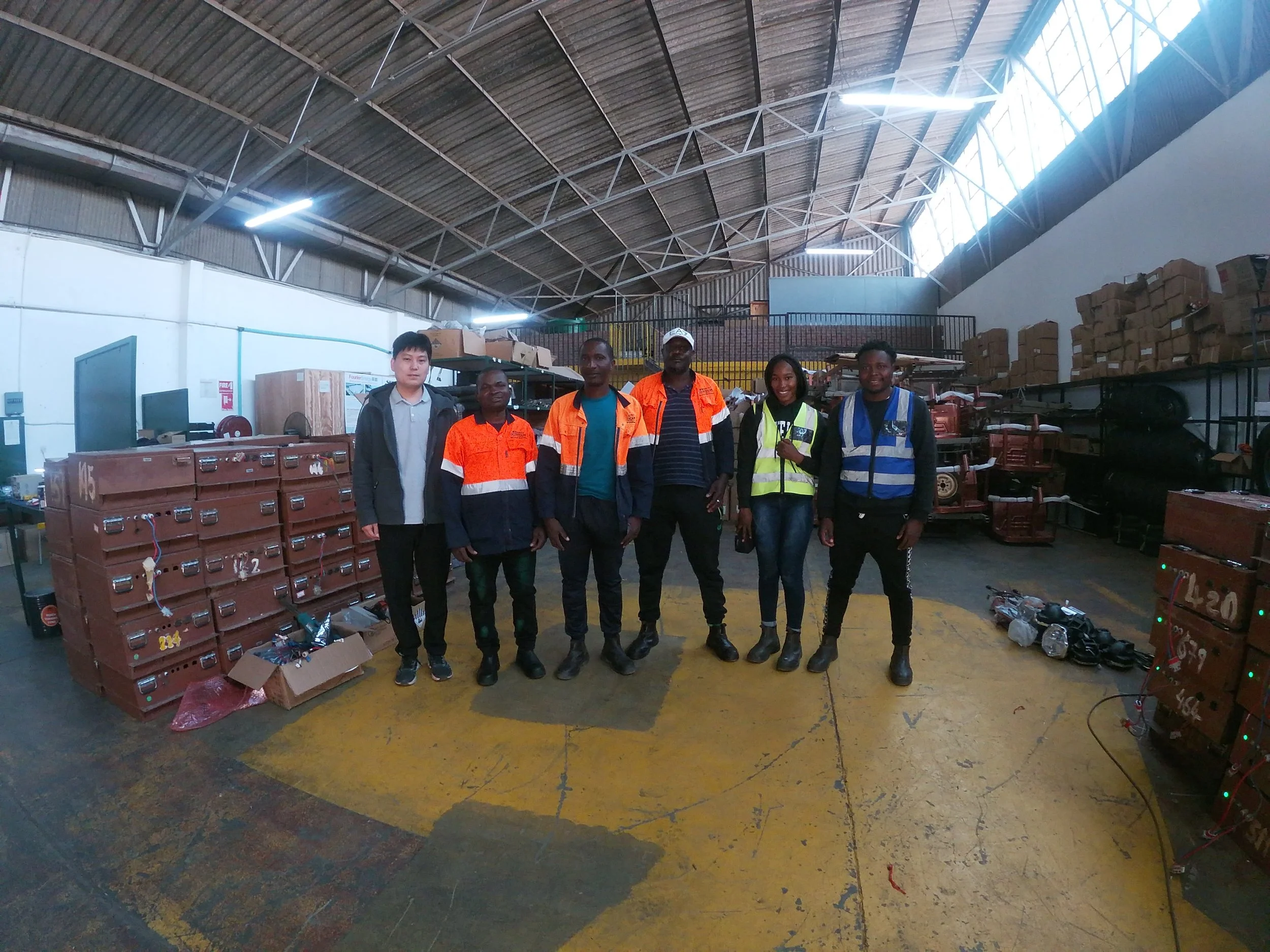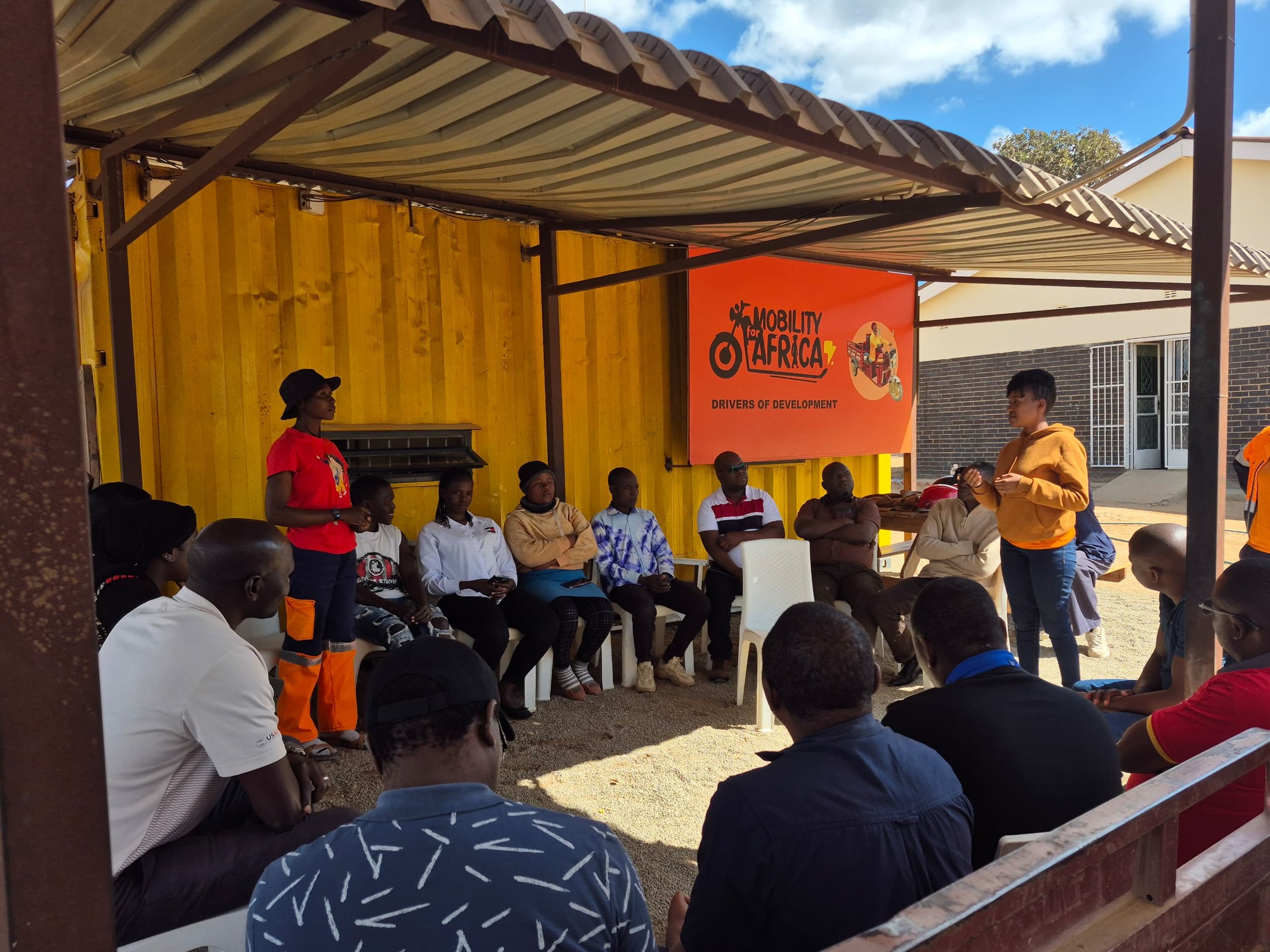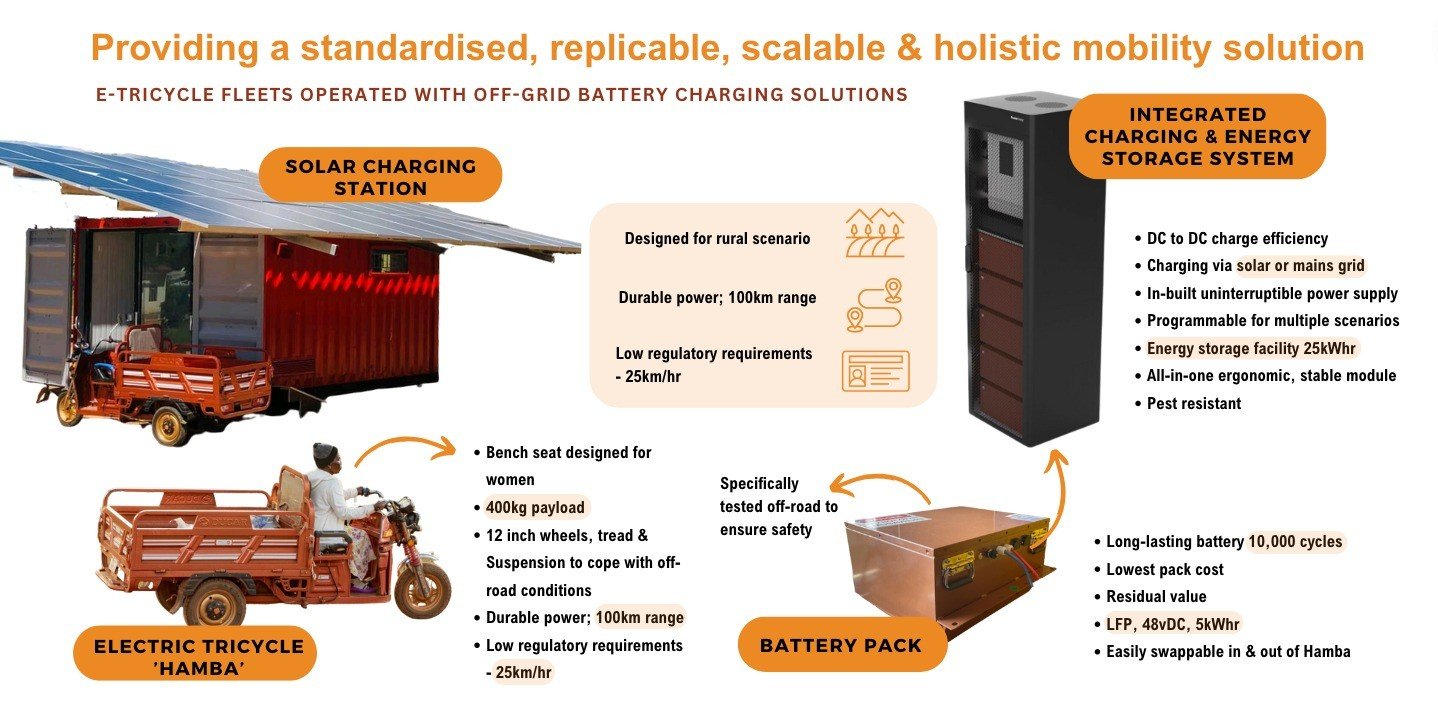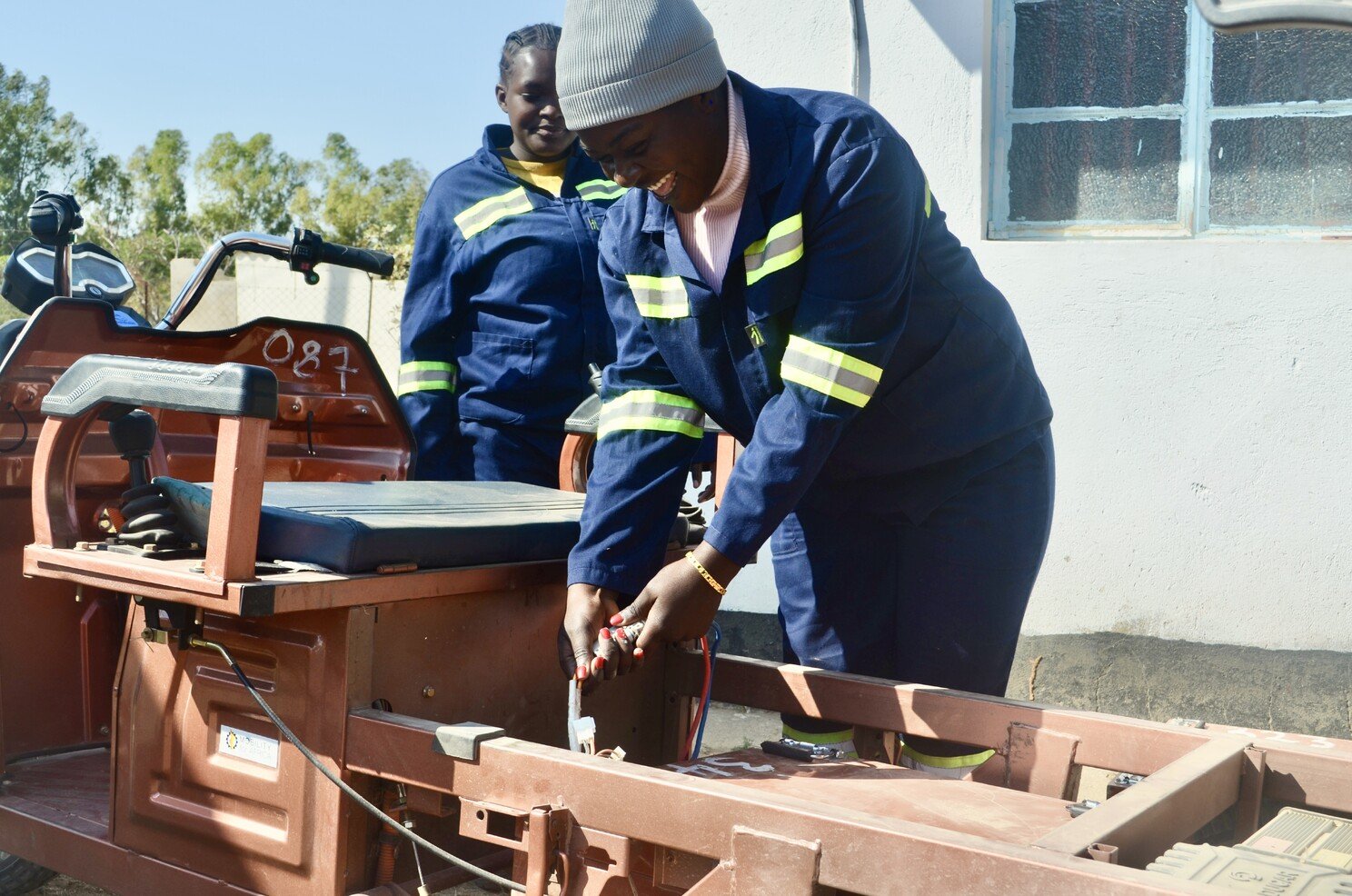4-14 June - As we have learnt at Mobility For Africa, LFP batteries needed to power our electric tricycles are not just cells in a metal box. They are complicated, sensitive, and need to be handled with care and love.
Over the last few years, we have been on a journey to make the optimum battery for rural off road and bumpy conditions. As we have learnt, the battery management system is key to how we manage our batteries and make sure they are ready to take our tricycles 100 km with a 400 kg load. Our investment in the BMS to optomize battery performance has been a journey led by our Engineering team Rumbi Chingisio and Anesu Makulu along with the amazing team led by Richard Zhou, at Fourier Energy.
In the latest move to be a leader in rural electric mobility, we held a 10-day training with our site technicians to equip our team with the skills to install, repair, manage and handle our BMSs. As we know, if we don’t equip our local team with the understanding and skills of green energy technology, we will not be able to build a truly circular ecosystem to sustain and recycle these materials. We don’t want to be part of importing toxic waste, but have a long-term vision to make sure every battery has a long life in the tricycle and then a second life for power tools and storage.
The training allowed our team to develop Standard Operating Procedures (SOPs) that would standardize best practices, reduce wear and tear, and optimize battery performance. Additionally, we explored potential modifications to enhance future BMS updates and reviewed IoT functionality, including LoRaWAN testing and geo-fencing capabilities. By prioritizing battery maintenance and documentation, we're not only resolving current issues but also future proofing our operations and reinforcing our commitment to delivering exceptional service.
Our technicians were thrilled to participate in the training, gaining valuable insights into the importance of adhering to Standard Operating Procedures (SOPs) and maintaining batteries in optimal condition. This, in turn, ensures our customers receive reliable support, enabling them to perform their work efficiently. It was a short training from 4 to 15 June 24, but our technicians unexpectedly learnt a lot from this experience.
Vimbai, one of our site technicians, expressed her enthusiasm, saying, "I was happy to have learned so much about battery maintenance – it was one of the most helpful workshops I've attended since joining the MFA team last year, and I felt empowered from this experience." Her sentiments echoed the team's overall satisfaction, highlighting the training's impact on enhancing their skills and confidence.











